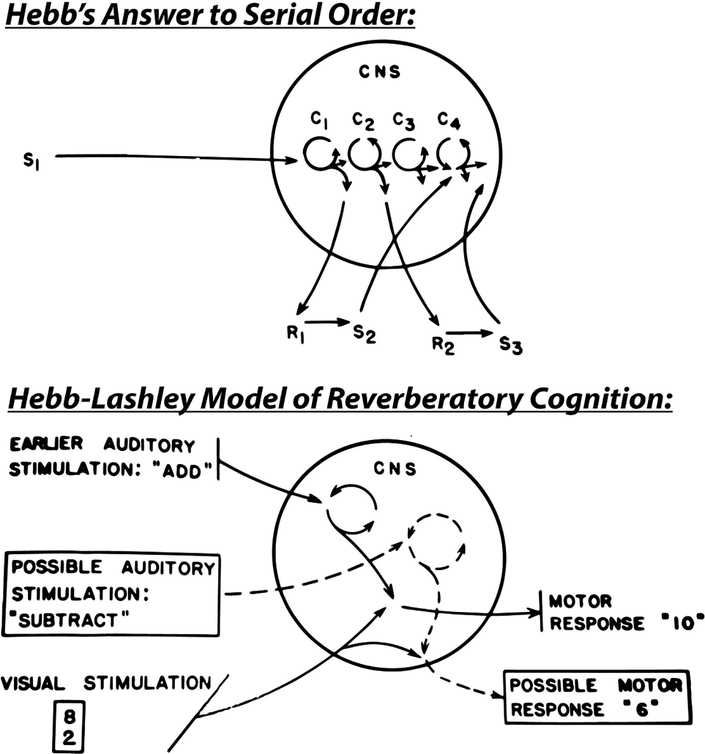Figure 9:
Cartoon depiction of the generic memory consolidation model versus a reentrent Lashley-Hebb model. Important distinction between the generic consolidation model (GCM) and the Lashley-Hebb model (LHM) is that the GCM is hierarchical in construction and consists of two divergent processing states (“encoding” versus “consolidation”). In the GCM, during acquisition, sensory stimulation is relayed from the primary cortices to towards the hippocampus (or the prefrontal cortex, depending on the model), acquiring an abstract representation which is importantly, orthogonal to other previously stored memories. In a later offline period, the population of neurons within the hippocampus involved in encoding are replayed, reinitiating the patterns in the primary and association cortices. Through multiple replay events, the cortex becomes capable of retaining the associations independent of the hippocampus. The LHM model differs notably in the emphasis of reentrant loops and the manner by which activity moves through the circuits. From their perspective (e.g., serial order of behavior), activity will inevitably travel through these recurrent networks with sensory input potentially altering the manner in which it travels. Finally, note bene that the LHM avoids localizing memory to a single region but emphasizes that the flow across multiple, recurrently connected regions form the larger mediating processes.

